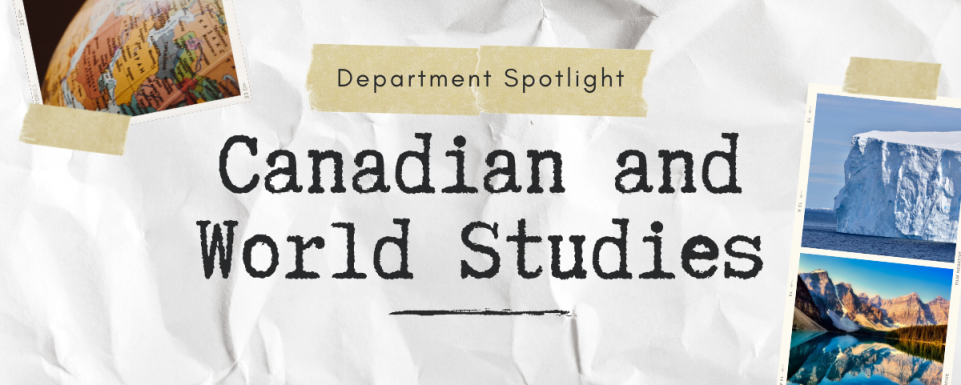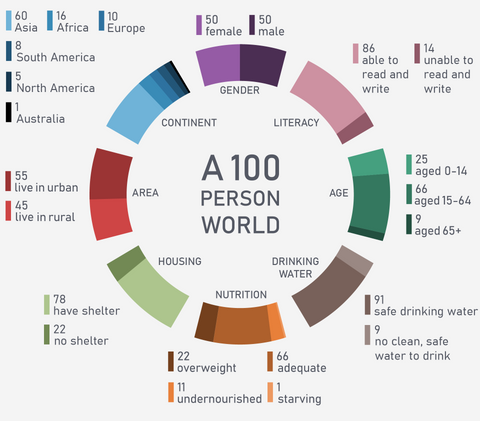Canadian and World Studies: Department Spotlight
November 25, 2021

It comes as no surprise that people around the world have become much more introspective and reflective over the course of the pandemic. Great minds everywhere are looking for solutions to complex issues like poverty, systemic racism, and healthcare shortages. The courses in Virtual High School’s Canadian and World Studies Department cover the geographic, economic, social, and historical implications of the decisions that have led us to where we are now.
If you’re interested in helping to make the world a more sustainable, accountable place to call home, check out what you can expect from a course at VHS!
What is unique about the VHS approach to teaching Canadian and World Studies online?
The Canadian and World Studies Department designs courses so that students can connect the events and realities of the present and trace them back to events and realities of the past. Students explore geography, politics, history, and economics by following the evolution of common themes and issues. Some themes include human rights, women’s rights, Indigenous history, technology within society, foreign affairs, multiculturalism, and Canadian identity. No matter the course, students will always grapple with how events shape society and the human experience.
What does VHS do to set its students up for success in this department?
We provide a variety of different assessment opportunities that draw on a number of different skills and abilities. Some assignments are more creative in nature, whereas others are more of a test of knowledge and critical analysis. Students are given plenty of opportunities to practice their inquiry skills so that they may receive constructive feedback before beginning to work on evaluated assignments. This ensures that students have a clear understanding of expectations and have direction for where they can continue to learn, grow, and challenge themselves.
What’s the world’s most popular sport? Find out and learn a whole lot more about globalization in this video from our Grade 12 course
CGW4U: World Issues: A Geographic Analysis.
What are some of the most rewarding aspects of learning about Canadian and World Studies?
The assignments and course content are practical. The courses introduce students to a variety of historical, social, and political matters that are relevant to their own lives. Students are encouraged to participate in geography, politics, history, and economics as well-informed, active, responsible, global citizens. The skills required for success in the 21st century are those practiced through coursework. Students tackle issues just as any other professional geographer, politician, historian, or economist in the field would.

Any advice for people looking to pursue a career in this area of study?
Think outside the box. Careers such as geographer, politician, historian, or economist are all overarching employment concepts. They are somewhat general and vague. Try to think about how you can apply what you are passionate about to what opportunities are available in the world around you.
Can you picture yourself designing desalination technologies to help secure fresh water for future generations? How can you utilize your illustration and design skills to create an infographic that might help raise awareness about gender equality? How would you construct a compelling narrative that draws parallels between the race riots in the 1960s and the Black Lives Matter movement that continues today?
Your passions, skills, and creative talents can be put to use in a variety of different ways! Some career paths may seem more conventional and straightforward, like those of environmental consultants, museum curators, or investment brokers. Other opportunities might seem a little harder to imagine, but they are no less possible or important. Try new things, practice new skills, and discover how your knowledge and skills can be applied in a variety of different fields. The opportunities are endless!
Here’s a sneak peek at some of the interesting facts from the Canadian and World Studies courses:
- The American and Canadian systems of federal government were modelled off of the Iroquois Confederacy. The Confederacy was a complex, long-standing governmental organization comprised of six Indigenous territories. The six territories had a cooperative, overarching federal government that operated alongside independent territorial governments. The Iroquois Confederacy had been in existence for hundreds of years prior to European contact.
- The last period of glacial activity began 100,000 years ago and ended about 6,000 years ago. The ice advanced as far south as present-day Wisconsin. During this time, ice in some spots reached a thickness of four KILOMETRES! That’s about the same height as eight CN Towers stacked one on top of another.
- Patrick Vincent Coleman was a train dispatcher during World War I. He witnessed a French cargo ship collide with a Norwegian vessel in the Halifax harbour on December 6, 1917. The French ship, which was loaded with munitions, caught fire. Coleman sent a telegram to an incoming train to warn them to not approach the city because the munitions ship was likely to explode. Coleman’s telegram saved the lives of 700 passengers aboard the train.